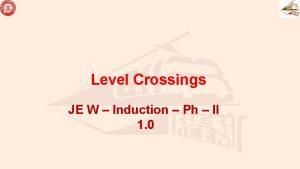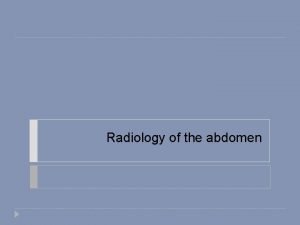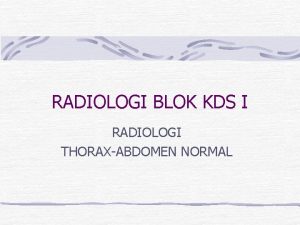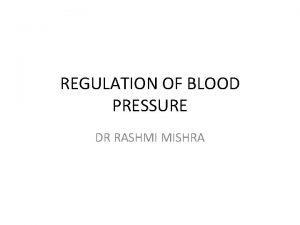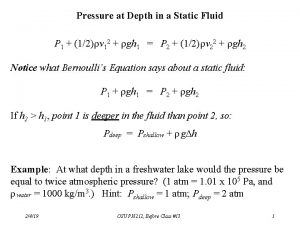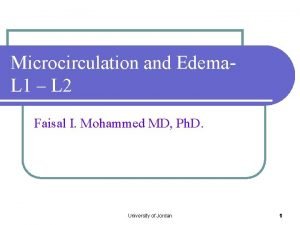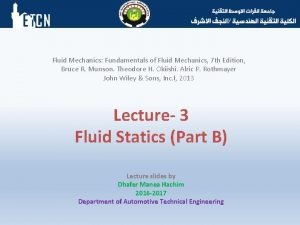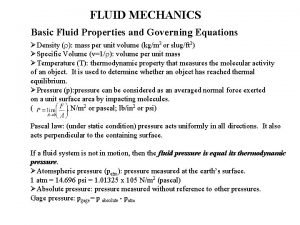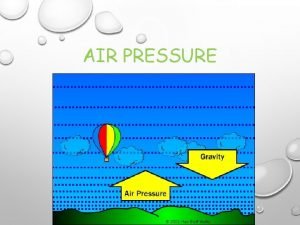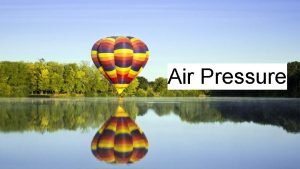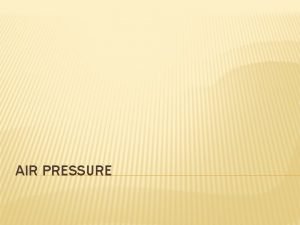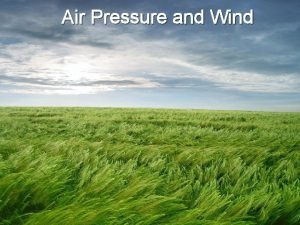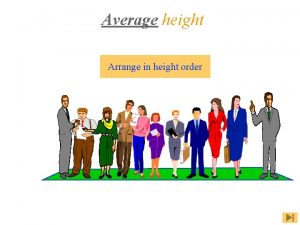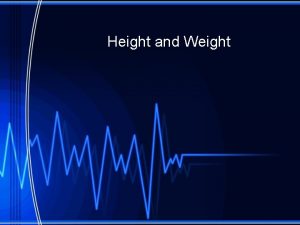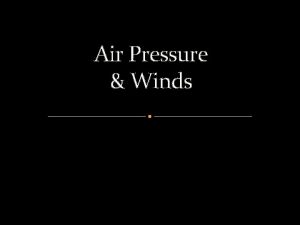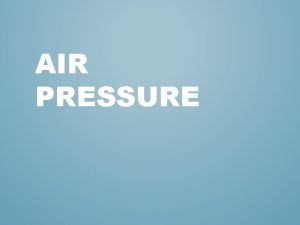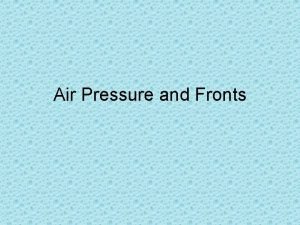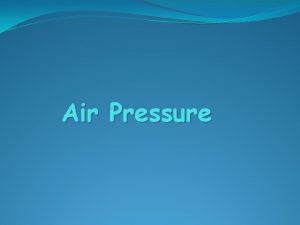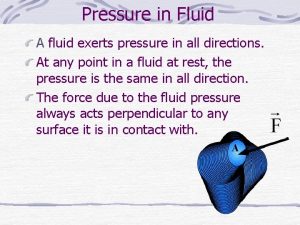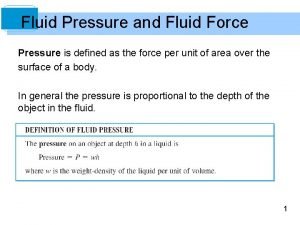PRESSURE OF A FLUID air pressure height of



















- Slides: 19

PRESSURE OF A FLUID air pressure = height of mercury column Barometer

Gauge pressure – pressure above the atmospheric pressure. absolute (total) pressure = gauge pressure + atmospheric press.


Pressure is produced by the weight of the fluid above the surface.

force weight of fluid pressure = -----------area mg density · volume · g = ---------------area density · (area · height) · g = ----------------area

pressure = density · height · g P = ρhg gauge pressure P = ρhg + P 0 absolute pressure SI units: 2 pressure: N/m = Pascals (Pa) 3 density: kg/m height (depth): m

Standard atmospheric pressure 760 mm Hg ≈ 30 in Hg Calculate 1 atm in Pascals P = ρgh 3 10 3 kg/m ρHg = 13. 6 x g = 9. 8 N/kg h = 0. 760 m 5 P = 1. 013 x 10 Pa

Pressure of fluid depends on depth.

Pressure does not depend on volume, only on height (depth). “Water seeks its own level”

More pressure at greater depth

Measure blood pressure at upper arm same height as heart

Pascal’s Principle – The pressure in an enclosed fluid is constant throughout the fluid. p 1 F 1 --A 1 = = p 2 F 2 --A 2

Pascal’s Principle When force is applied to a confined liquid, the change in pressure is transmitted equally to all parts of the fluid. Draw a bottle of water with arrows to illustrate the regular exerted pressure. Then draw a water bottle that you squeeze. What happens to the pressure? What happens if you open the top? How does Pascal’s Principle explain what


A force applied to one section of an enclosed liquid at rest will be transferred to the entire liquid with the same amount of force.

Hydraulic Systems A force applied to one piston increases the fluid pressure throughout the fluid. If the second piston has a larger surface area, the force is multiplied! Pressure = Force/Area = Pressure = Larger Force/Larger Area



 Tvu of level crossing
Tvu of level crossing Hubungan air dengan tanah
Hubungan air dengan tanah Uses of wind vane
Uses of wind vane A swirling center of low air pressure is called
A swirling center of low air pressure is called Fluid sf
Fluid sf Fluid statics deals with fluid at rest
Fluid statics deals with fluid at rest Fluid statics deals with
Fluid statics deals with Fluid compartments in the body
Fluid compartments in the body How does water go through your body
How does water go through your body Interstitial fluid vs extracellular fluid
Interstitial fluid vs extracellular fluid Timeline in fluid mechanics
Timeline in fluid mechanics Extracellular fluid and interstitial fluid
Extracellular fluid and interstitial fluid Fluid thrill meaning
Fluid thrill meaning Air fluid level x ray
Air fluid level x ray Air fluid level adalah
Air fluid level adalah Capillary fluid shift mechanism blood pressure
Capillary fluid shift mechanism blood pressure Static fluid pressure
Static fluid pressure Colloid osmotic pressure
Colloid osmotic pressure Center of pressure equation
Center of pressure equation Euler equation in fluid mechanics
Euler equation in fluid mechanics
